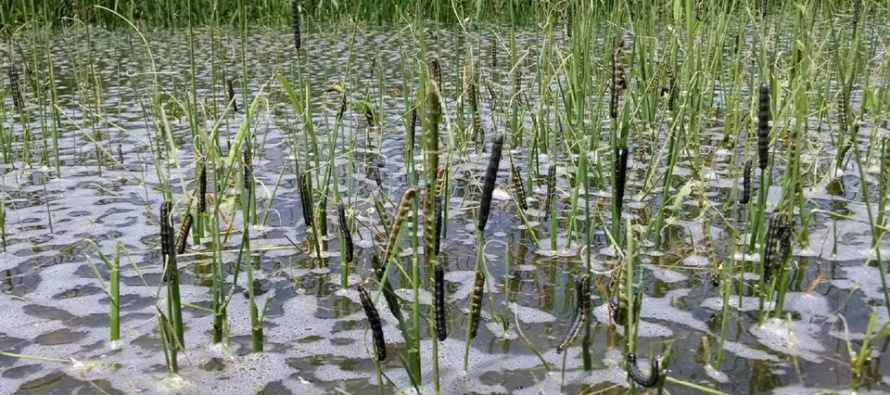Fall Armyworms in Rice: 2016

Related Articles
- Rice Variety Trial Results For 2010, Plus Rice Research Report 0
- Rice Seeding Rate Calculator and Chart 0
- Mississippi Cotton Insect Situation of 2010: A Look Back 3
Latest Tweets
It looks like 2016 is shaping up to be another big year for fall armyworm in rice. As a reminder, our threshold in rice at this point in the season is 5 per 10 sweeps or when significant damage occurs. So far this season, we have received numerous calls from all areas of the Delta with fall armyworms well above this level with the highest numbers exceeding 100 per 10 sweeps in some cases.
As a reminder, the fall armyworms that occur in rice are very easy to control with a pyrethroid. In general, low rates of any pyrethroid are usually adequate to effectively control fall armyworm in rice. However, I tend to recommend higher rates in older rice where coverage may not be as good as it would be in younger rice.
Fall armyworms will move up and down plants throughout the day, so larvae that are low in the canopy may not come into contact with the insecticide until they move to the upper portions of the plants. Sometimes, this may not occur until 2-3 days after an application. Using higher rates in larger rice will help ensure that there is enough residual insecticide remaining to provide effective control.
We have also received some questions about waiting a few days to spray so that the insecticide can be tank mixed with a fungicide or so the spray will be better timed to also control stink bugs. As a general rule, most larvae will consume a large percentage of the foliage they are going to eat in their lifetime within the last few days of the larval stage.
As a result, it may not hurt to wait a few days if you are finding primarily small larvae (<1/2 inch). Just remember that development of larvae is highly dependent on temperature so significant defoliation can occur fairly rapidly this time of year. If you are going to wait a few days, keep a close eye on those fields and don’t let larvae get too big.
As always, give me a call with questions anytime. Also, we are trying to get a good handle on how widespread they are, so let us know when fields are being sprayed around the state.




Sprayed about 250 acres of hayground today.
Newton/scott county